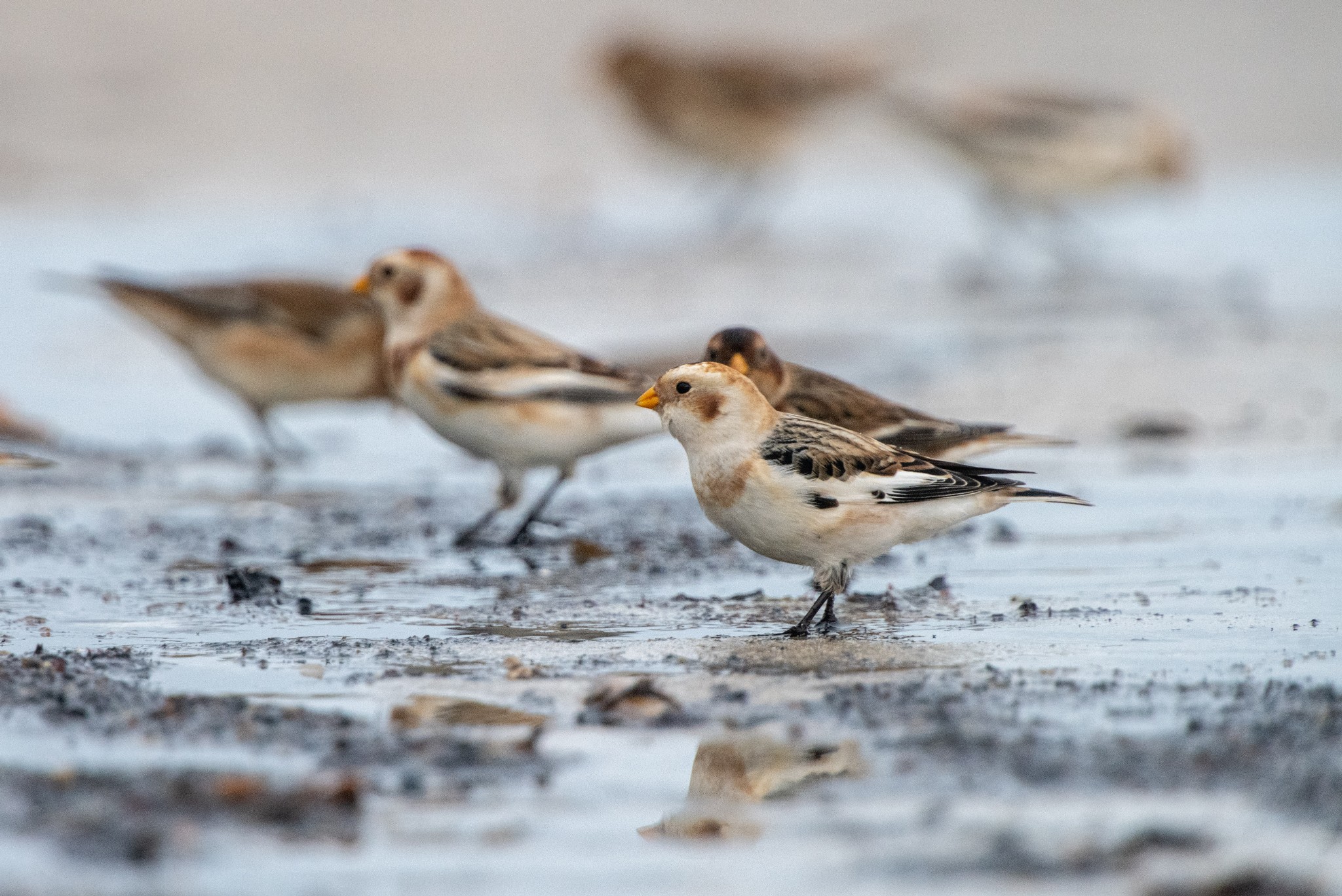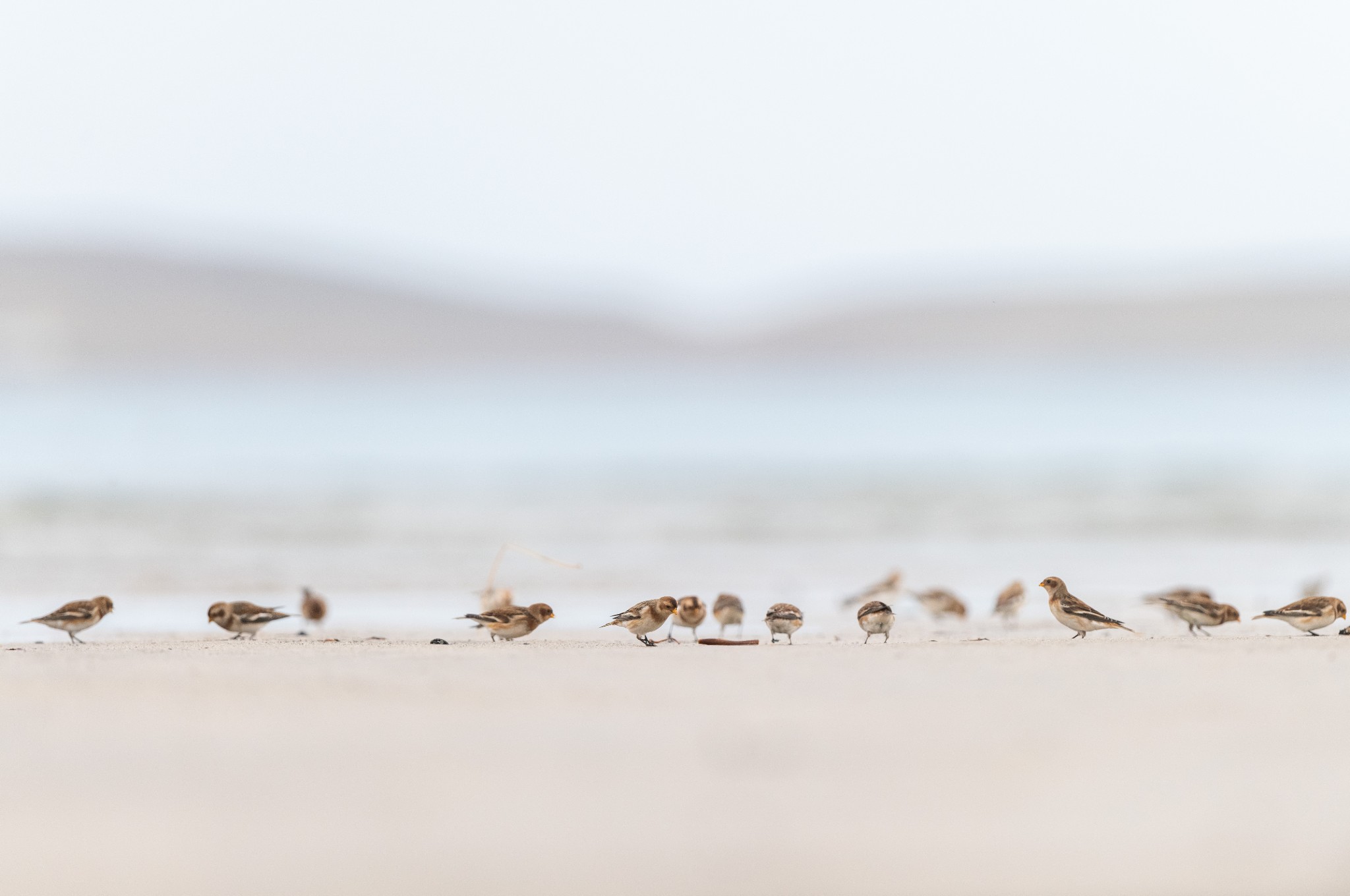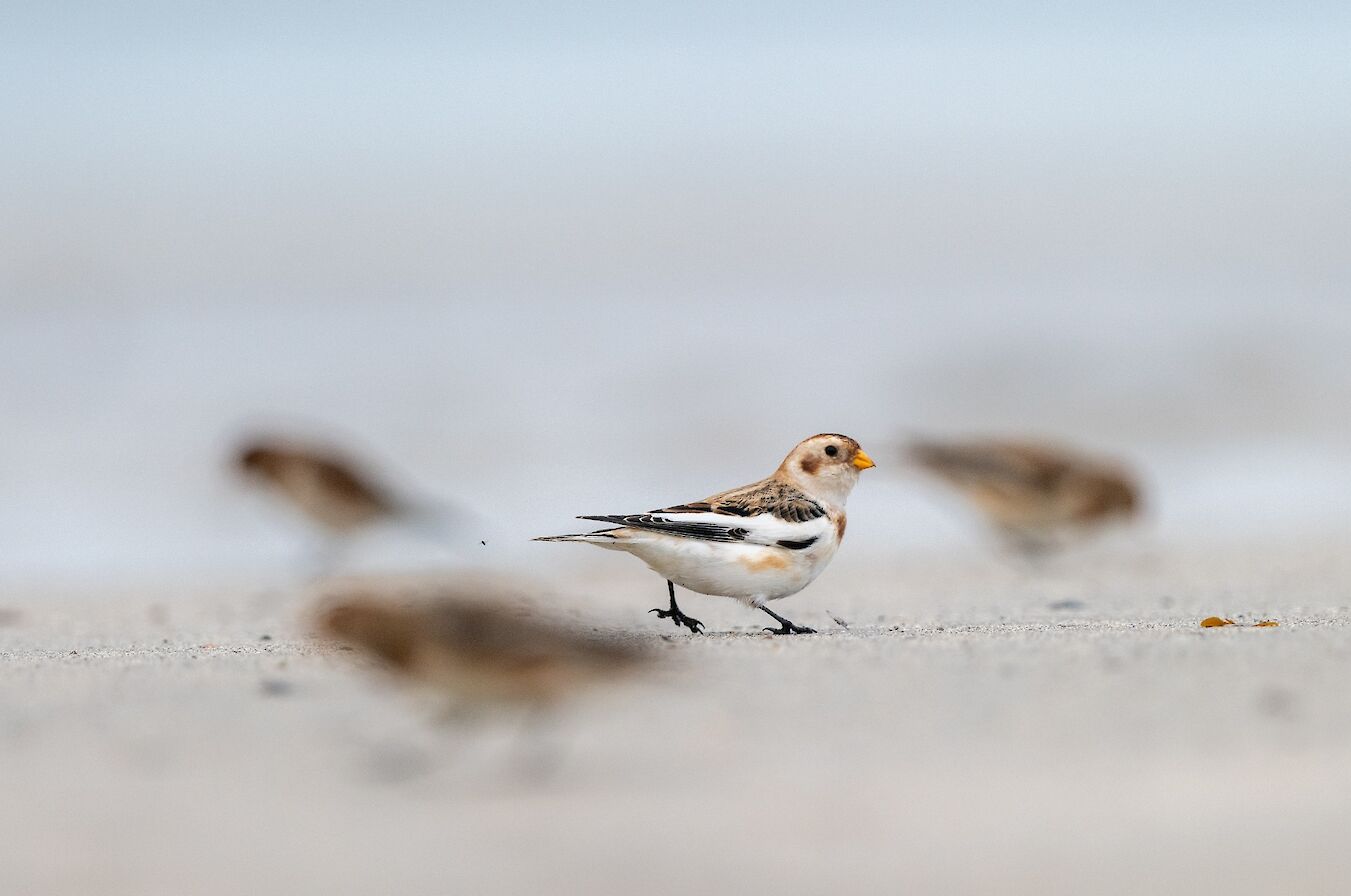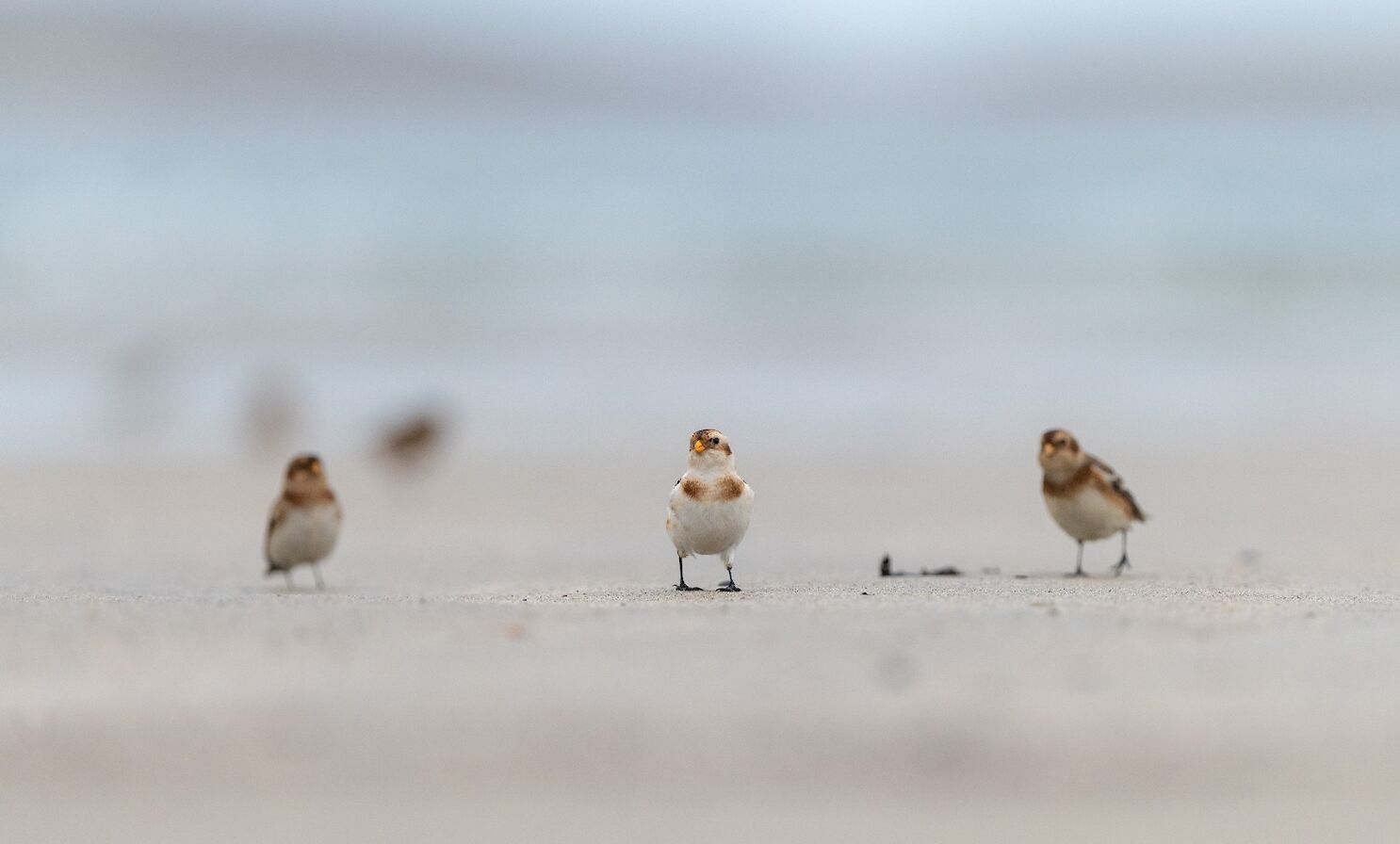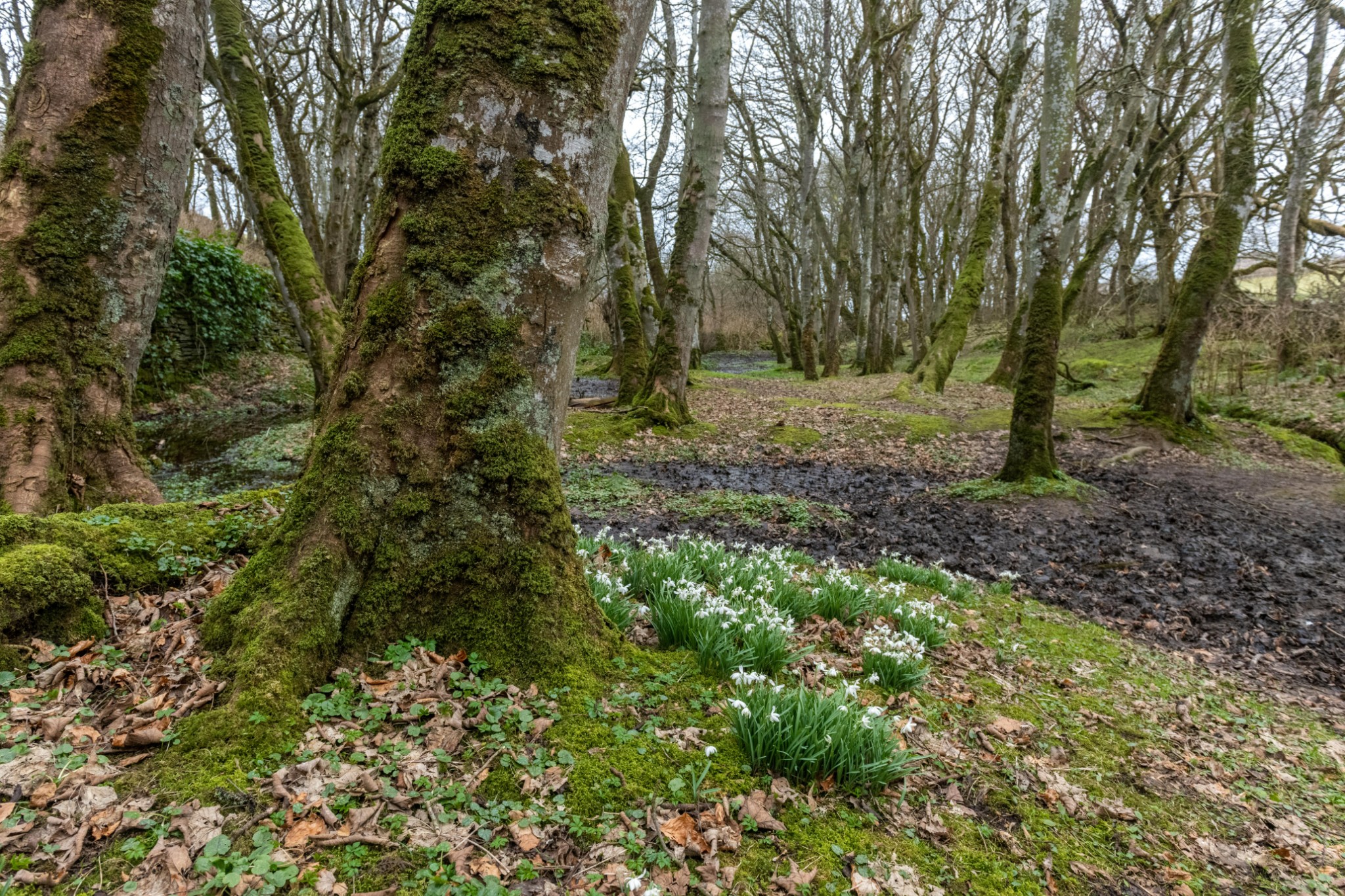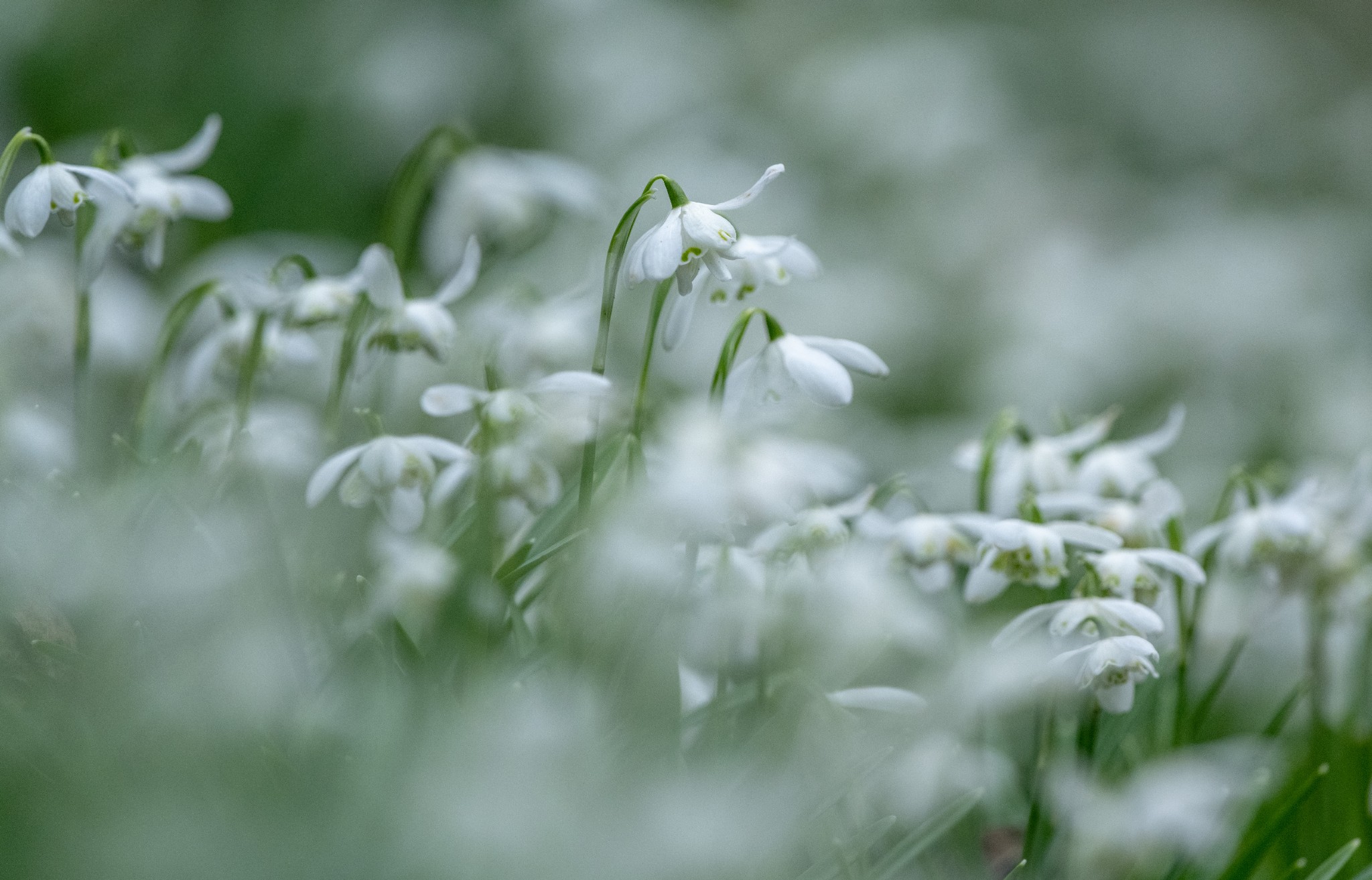It’s March and so spring is officially here. But this is Orkney, so it would be foolish to think winter is over - or at least unlikely to make an appearance again before the end of the month.
I actually avoided most of the wild February weather by not being in Orkney (I feel like I should apologise for this for some reason!) I was fortunate enough to be filming in the remote rainforests of central Africa and the temperature difference was quite a shock.
I thought however that I would concentrate on two subjects that have a link, in name at least, to the remnants of winter, the snow bunting and snowdrops. I’m sure we all have a species that has eluded us over the years for whatever reason. One of mine has been the snow bunting, certainly in a photographic context where I have really struggled to make any images of them. It’s all the more frustrating as the birds themselves can be really quite approachable and confiding.
During December I was doing a mini beach clean at Scapa when a small bird landed about four metres away from me, a snow bunting, and of course I didn’t have my camera with me. Until then my closest encounters with them weren’t even in Orkney but right in the heartlands of their breeding grounds, in the arctic tundra of Western Greenland. On assignment last year I would walk past a family of fledged youngsters pestering their parents for food, they were a welcome sight in such a remote location. The Collins Bird Guide describes the summer plumage of the male as ‘unmistakable’ and it really is, ‘with all-white head and breast and all black back’. If you see a male bird in Orkney during May you might just be lucky enough to see it in its black and white finery.
During the winter the flocks of snow bunting to be found in the UK come from Greenland, Iceland and Scandinavia. They like stubble fields, and Marwick Head is a good place to look, plus places with sand dunes and beaches where they can pick up seeds and other vegetation. I had a tip off that a flock of around 70 birds had been frequenting the burn mouth of the Sands of Evie beach and sure enough, as soon as I parked, I saw them, not on the shore but bouncing high in the sky. I squinted my eyes, partly because of the sun but partly because the flock disappeared out of sight over the fields and I thought I had made a wasted trip. But I needn’t have worried, they were just circling and were soon back on the shore.
I can see this is a mixed flock of both males and females. The males have an overall brighter appearance with a whiter body and more white in their wings than the females. The females and younger birds are altogether browner, but that’s not to say they are dull - far from it. Like many of the finches, the streaked plumage on their backs is sublime. What stands out in both sexes however is their bills - it’s a dense, waxy, yellow colour and really stands out despite the bill itself being quite stubby.
I’m trying to figure out how I approach them. It’s a small bird of course and so getting them any kind of decent size in my image means getting very close, and that won’t be easy on a wide-open beach with no cover. There are also people walking and enjoying the beach so I’ll have to time things properly too. I decided to go ‘softly, softly’, but even doing that the flock alights, does a circuit out over the sea, then high into the sky and lands a good 25 metres away. Maybe this isn’t going to be as easy as I thought. I don’t want to keep putting them up into the sky and disturb them too much.
So, I do what I often have to do, be it in Orkney or Africa, and that is simply sit tight and let them come to me. It’s overcast but still quite bright and the light looks beautiful, a light pinky hue in the sky. I want to photograph them at eye level and so this means lying in the wet sand. I have a yoga mat for this very purpose and to avoid getting wet, but I’ve left it in the car and I’m already in position, so I’ll just have to get wet.
I can see the tide is receding though. What I don’t want is for the birds to have more sand to move out onto. Fortunately, with very little profile to speak of, the birds seem relaxed and start moving towards me. But they move quickly and lying prone like this makes it hard to frame the way I want to. They are feeding in amongst the rotting seaweed but on reviewing the back of my camera I can see that this is something of a coincidence. I can see grass seeds, no doubt blow from the top of the shore or sand dune, in their beautiful, bright beaks.
I needn’t have worried about disturbing them either. I come to realise after a few hours that they have their own pattern and timetable. They feed together for a while, the flock alights as one, circles high, does a few loops out to sea, then lands back where they started. They follow this pattern every twenty minutes or so, intermittently stopping to rest, wash and preen, before getting back to the business of feeding again. It’s wishful thinking I know but my mind couldn’t help wandering back to Greenland and thinking how cool it would be if one of the birds here had been born on the tundra near my camp site.
We do have other species in Orkney of course who’s appearance is strongly linked to that of snow; the mountain hares of Hoy, the stoat in ermine and the occasional appearance from a snowy owl.
My second snowy subject is much less mobile than all of those – it’s the snowdrop. Really with this flower I wanted to demonstrate the different kind of images you can produce using different focal lengths on one subject. My favourite place to find them is in Binscarth Wood where they thrive amongst the sycamore trees in the damp glades. Even now however, the edges of their white petals look a little worse for wear, but I manage to find a nice thick stand of them to work on.
My lenses of choice here are the Tamron 90mm macro lens, a Nikon 24-70mm f2.8, a Nikon 70-200mm f2.8 and a Nikon 500mm f4. I start with the 24-70mm wide angle and it’s a nice way to show the profusion taken from above, or a simple habitat shot showing them in their wider surroundings.
I struggle a little when I put the 70-200mm on to find an angle I like, so switch to the 90mmm macro lens. When there are so many flowers in your background, even in a close-up image the background can appear messy. The way around this is to open up your aperture to f7.1 or f8 and the background will become much more blurred and most likely more appealing. The downside to deliberately closing your depth of field (how much of the picture is in focus) is that the subject itself faces the same issue. A petal in focus from back to front at f13 might now only be in focus from the front to half the petal at f8. It’s very much about experimentation and what you like personally.
Despite the cold and the obvious sign of spring with the snowdrops being out, there are other little signals too. I can’t see him but a chaffinch is singing his heart out in the canopy. The air is almost overpowering, thick with the aroma of emerging wild garlic.
The image from the 500mm lens turns out to be my favourite. You might think that such a long lens would be overkill for a small flower but in circumstances where there is a thick carpet of flowers, I think it’s ideal. The shortened perspective means I can throw the foreground and background out of focus, really picking out the flowers I want. I’m lying on my stomach for this, getting as low as possible.
The downside to this is that I’ve taken my dog Lyra with me. She sees me lying in the dirt as an invitation to clamber all over me as I try to take pictures. She’s been patient so it’s time to put all those lenses away and stretch our legs - all six of them.
Find out more about Raymond’s work via his official website. You can also find him on Facebook, Twitter and Instagram.
